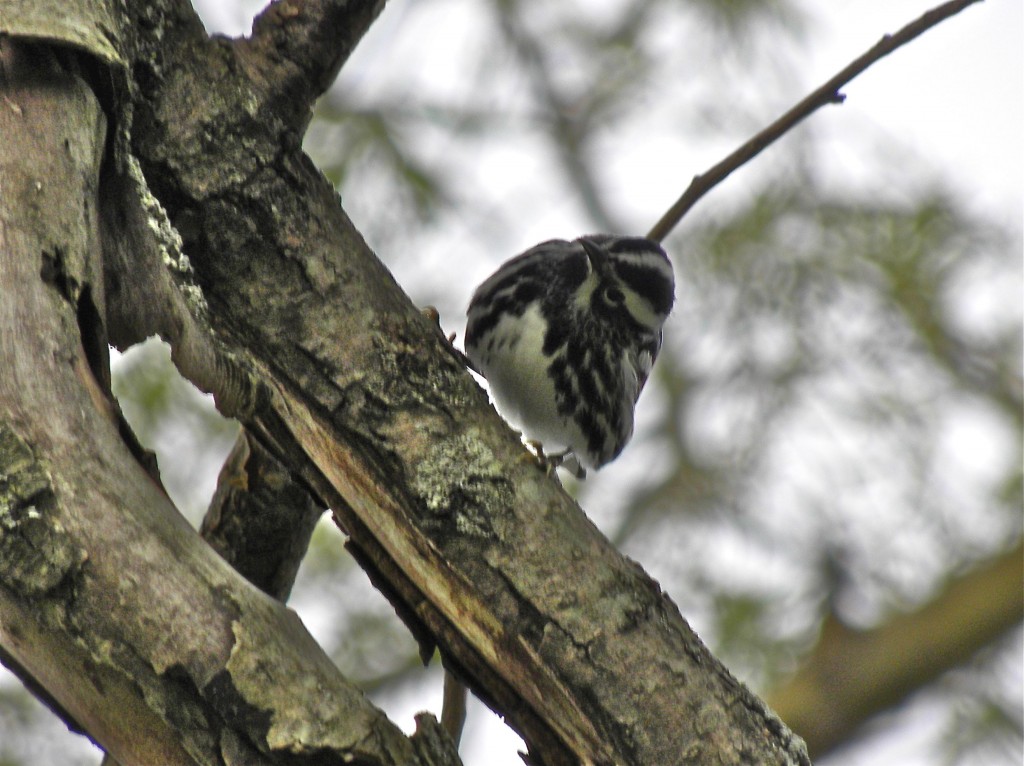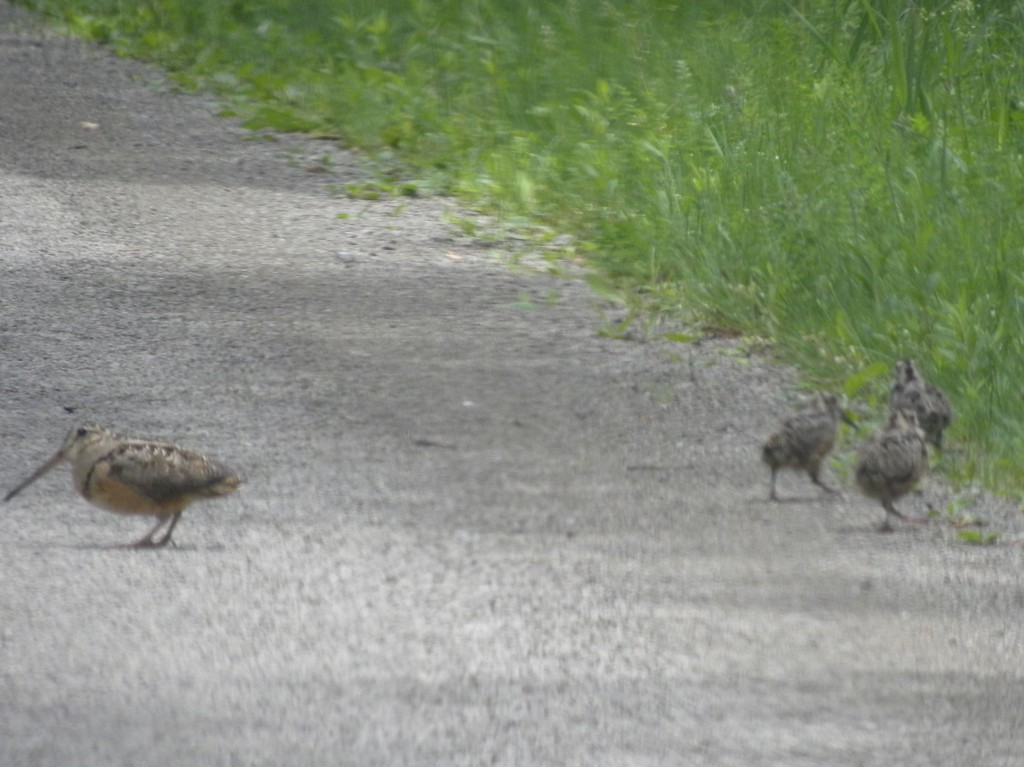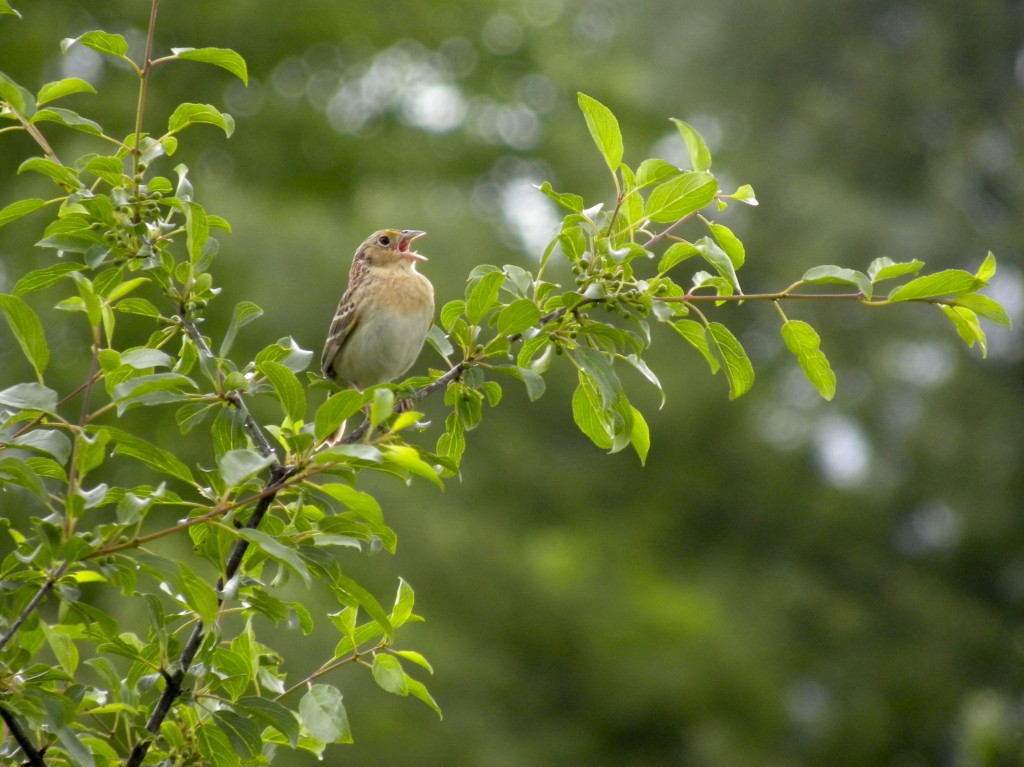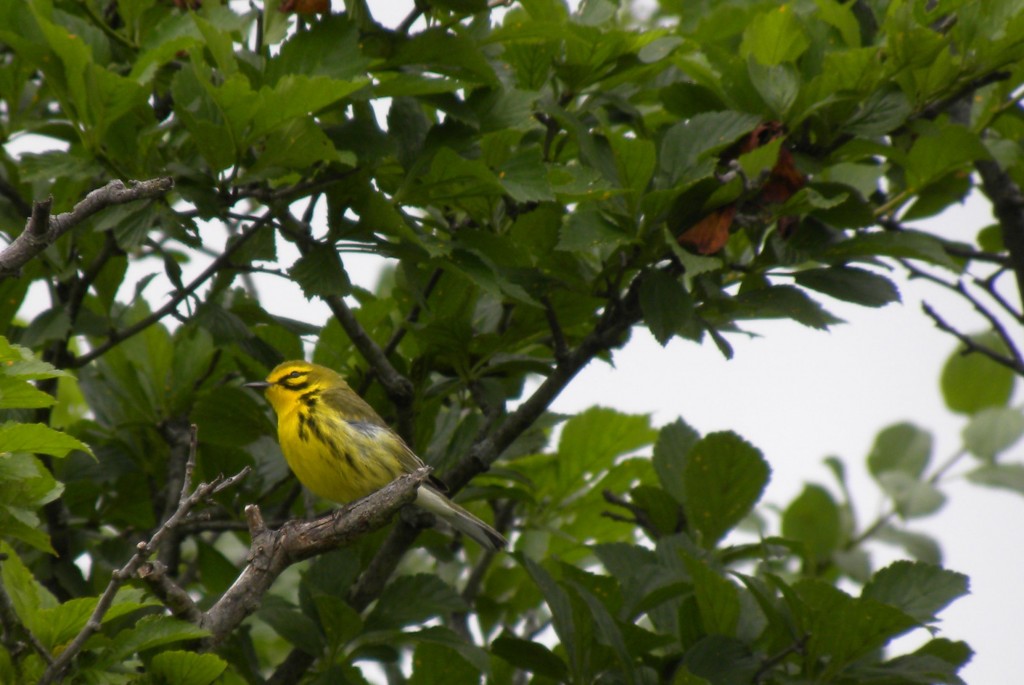June 7 2012. This Bird of the Day Northern Waterthrushwas anxiously patrolling its nest site as I made my way through a rich hardwood forest this morning. It was carrying a succulent morsel for its nestlings and my presence was clearly unwelcome. I stopped for a minute as it flitted around from branches to ground and back up. In that time I managed to get this shot, but it was quite tricky in the low dappled light and with the bird moving around so quickly.
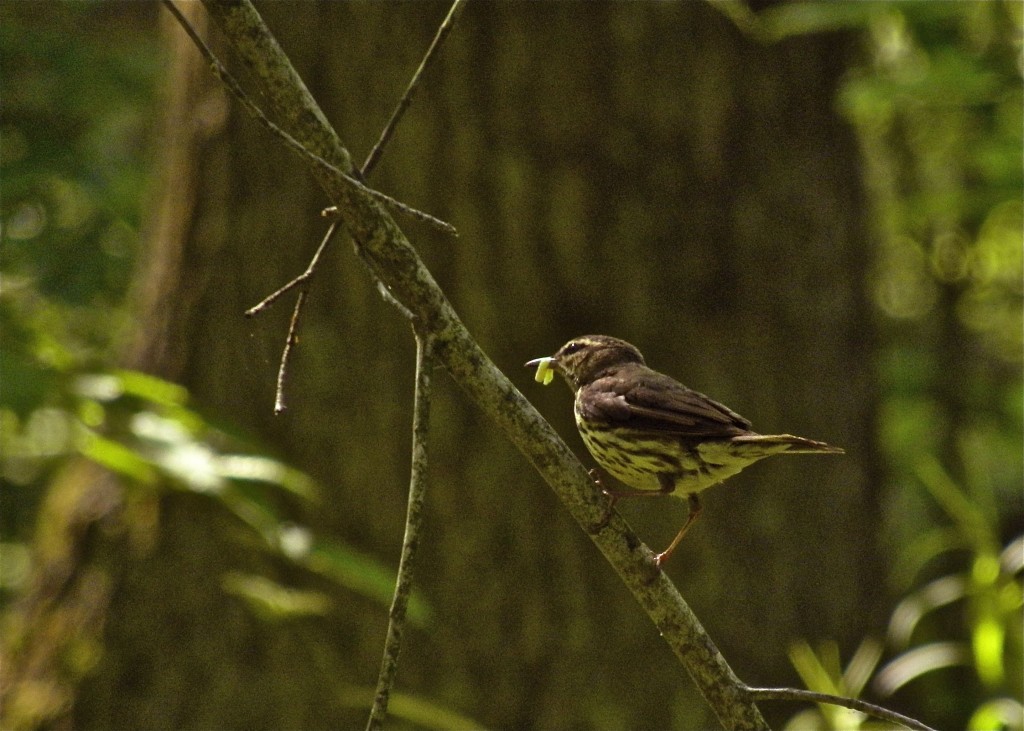
I spent 2 or 3 hours of the early morning, as stand in for another birder, conducting a survey of forest birds. He is out of the country for a while, but for nearly twenty-five years has maintained the same string of 5 survey stations; it would be a pity to let it drop now, so I agreed to take on this year’s survey effort. These and many other sites are monitored annually under a province-wide initiative called the Forest Bird Monitoring Programme (FBMP). Under FBMP fixed sites are visited twice every year in the late spring and early summer, and at each visit the observer records all birds seen and heard within a one hundred meter radius. The sampling is done by point counts whereby the observer remains at the fixed station to record his/her observations over a period of ten minutes. Most of the identification is only possible by identifying songs and calls; few birds let themselves be seen.
This particular mature forest has lots of standing water, a good mix of hardwood trees and plenty of understory saplings and shrubs. It was quite brisk when I started at 7a.m; but had the weather had been warm the mosquito hordes would have been a nuisance. This damp, cool, early June freshness made the walk pleasant, if rigorous, and the forest was full of assertive territorial songs; there was plenty to hear and enjoy.
I stopped at Station A and set a timer for ten minutes, in that time I heard fourteen different and distinguishable birds (seven species) either singing or calling. My notes for that station included Eastern Wood Peewees, American Robins, Northern Waterthrushes and Great-crested Flycatchers; all of them singing or calling. The species mix contained many of the same at each of the 5 stations and the morning also included Chestnut-sided Warblers, Scarlet Tanagers, Veerys, Red-eyed Vireos, Ovenbird, Blue-winged Warbler and Wood Thrush. Twenty species in all.
I’ll be repeating the process again later this month. Things will have changed, there will likely be a lot more activity from parent birds feeding fledglings, and it will be interesting to compare which species were evident today but not next time, and vice versa. Collecting, compiling and analyzing the data builds a greater picture of trends in bird populations, and therein the purpose of the FBMP.
